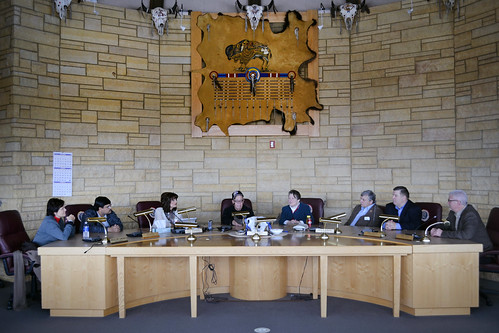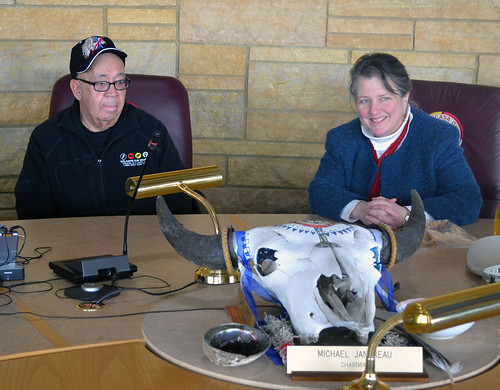
Last week, Deputy Secretary Kathleen Merrigan led a USDA delegation deep into the heart of Indian Country in South Dakota. All three of us and our teams from USDA’s South Dakota state offices for Rural Development, the Farm Service Agency and the Natural Resources Conservation Service were joined by the Acting Director of the USDA Office of Tribal Relations, Max Finberg, along with Darlene Barnes, the regional director of the Food and Nutrition Service, and South Dakota’s Agriculture Commissioner Walt Bones. We were hosted by the Crow Creek and Lower Brule Sioux nations in the center of our state. The Deputy Secretary held a roundtable discussion on the importance of agriculture and economic development in Indian Country and visited a unique Native American food company. She was joined by many tribal leaders and organizations, including farmers, ranchers and food entrepreneurs.
Hosted by Crow Creek Chairman Brandon Sazue, Lower Brule Chairman Michael Jandreau, Pine Ridge former Chair Cecilia Fire Thunder and Hunkpati Investments Executive Director Krystal Langholz, the Deputy Secretary and USDA representatives started the day with a moving roundtable discussion about agriculture, food, education, community and economic development opportunities in Indian Country.
“It was personally moving for me and my team to be so graciously hosted by these tribal leaders. USDA still has more to do in our government-to-government relationship with Tribal Nations, but I was proud to see our investments beginning to bear fruit. The entrepreneurial spirit demonstrated by Hunkpati and Lakota Foods can be a future path to success for Indian country. I left inspired,” declared Deputy Secretary Merrigan.
Roundtable attendees – ranging from a local award-winning rancher to a small business owner who had received a USDA grant – expressed support for the cooperation and collaboration between the USDA and tribal communities. A broad array of issues were covered, including: infrastructure needs, sacred sites protection, healthy food choices for children and families, renewable energy projects and greater access to farming and ranching programs. They also identified some areas where USDA programs could be more successful for Indian Country.
During the discussion, Krystal Langholz described her organization’s relationship with USDA by saying “Hunkpati Investments is so thankful for the partnership with USDA in community and economic development on the Crow Creek Reservation. The impact of USDA’s investment has been profound -- helping us start new businesses and create jobs through investing capital and technical assistance in our community.”
The discussion took place at Hunkpati Investments in Ft. Thompson, a recently certified Native Community Development Financial Institution Fund (CDFI, as administered by the Department of Treasury), in their beautiful new Boys and Girls Club community center, which was built with funds from the American Relief and Recovery Act. Hukpati is a community anchor for entrepreneurship, community education and financial literacy education the Crow Creek community that has received funding through a number of USDA programs, including our Rural Business Enterprise Grant.

After a traditional lunch featuring local walleye and buffalo stew, Deputy Secretary Merrgian led the group on a tour of Lakota Foods to see their popcorn production facility. Located on the Lower Brule Reservation, Lakota Foods is the first and only Native American owned and operated production plate dedicated to processing, packaging, and marketing popcorn reflecting Native American origin. The popcorn grown by the Lower Brule Farm Corporation is also sold to Orville Redenbacher and others.
As a final touch, the delegation visited the Lower Brule Tribal Headquarters. In the impressive Council chambers overlooking the Missouri River, Dr. Merrigan presented Chairman Jandreau with ceremonial tobacco grown on the National Mall and honey made by USDA’s Agricultural Research Service. She in turn was presented with a beautiful star quilt and traditional earrings. As we said our farewells, we all departed hopeful for what the future holds on the Great Plains of South Dakota.
To find out more about USDA outreach to Tribes, click here.

